What is soil compaction?
Soil compaction is the term given to soil when its particles are compressed together. It is more common on clay based soils due to the uniformly shaped soil particles that make up the soil, but it can affect all types of soil mixtures.
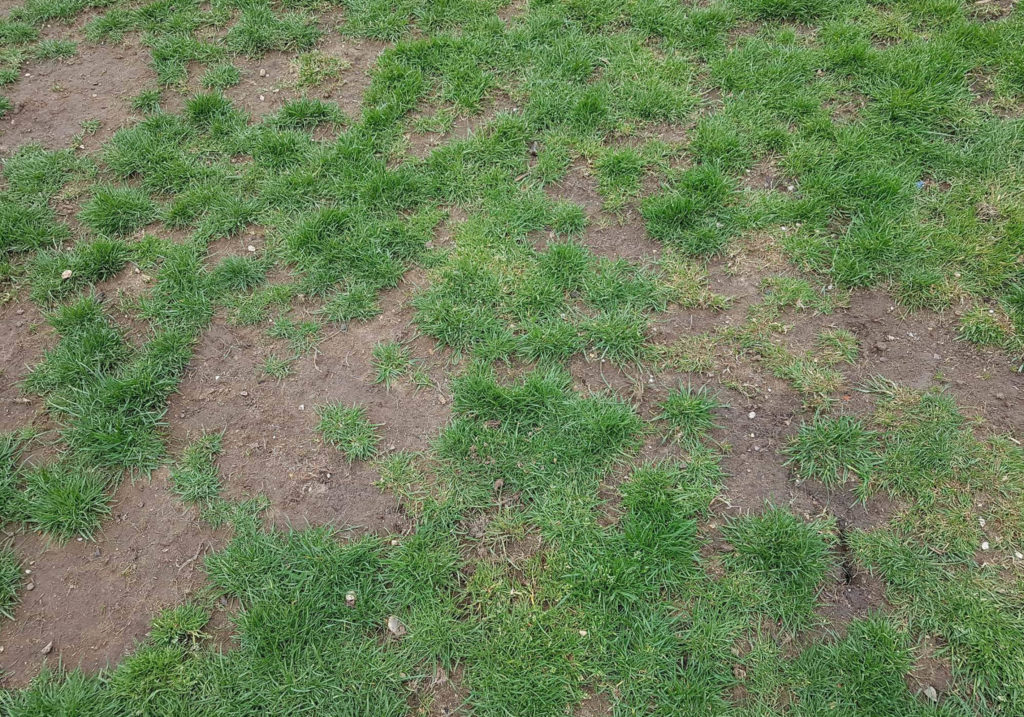

Why is soil compaction a problem?
The grass plants in your lawn grow roots in to the soil from which they absorb water, nutrients and air. These roots grow through the pores (gaps/tunnels between soil particles) in the soil. A healthy soil allows air and water to pass freely through these pores. Over time, soil compaction will reduce the size of these pores, preventing water, air and nutrients to pass through freely. When this happens, the roots start to die, allowing the tunnels to close up completely.
Once the soil has become compacted, it is difficult for it to recover naturally. The grass plants find it difficult to spread in to compacted soil as there is no water, nutrients or air, and the pores are often too small for them to start growing in to. The effect on your lawn is clumps of grass plants with bare areas of soil.
How can I reduce soil compaction?
There are several options available to fix soil compaction, all of which depend on how compact the soil is. Hollow-tine aeration reduces compaction in the soil by removing soil plugs from the first couple of inches of soil, allowing the surrounding soil particles to move in to these now empty spaces.
The diagram below shows how hollow-tine aeration helps alleviate soil compaction in lawns. The red circles represent soil particles (not to scale)
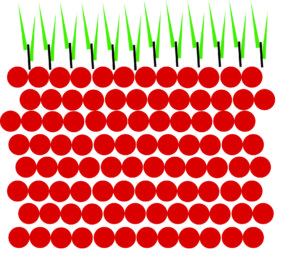

Above: As you can see in the image above, the soil particles are close together, preventing water and air movement through the soil, and preventing the roots growing.
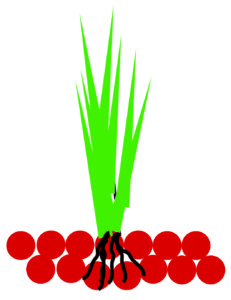

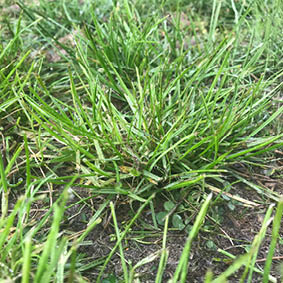

Above: As the roots are unable to move through the soil, the grass plants are unable to spread throughout the surrounding soil. This causes the grass plants to grow very ‘leafy’ and ‘sprouted’, but the overall growth of the grass plants is sparse.
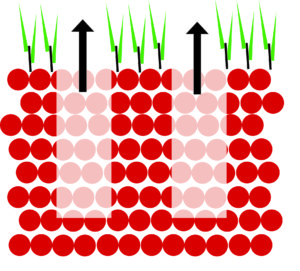

Above: Aeration relieves compaction by removing plugs of soil.
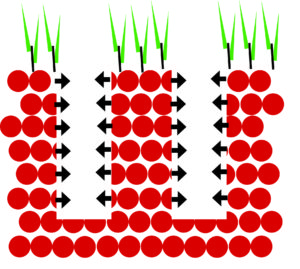

Above: The surrounding soil particles can now move apart from each other by filling in the hole left by aeration.
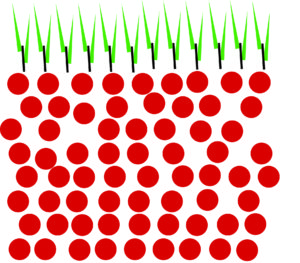

Above: As the soil becomes less compacted, the grass plants will once again start to grow in to areas around the soil.
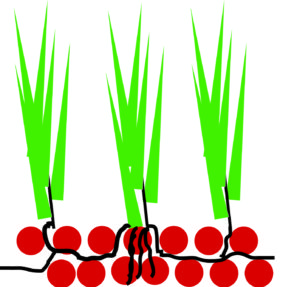

Above: As you can see from the image above, the roots can now move through the soil, while the flow of air and water is greatly increased.
